Living, Eating, and Sleeping in a Withings World
Here's what it's like to quantify your life with wearable tech from Withings.
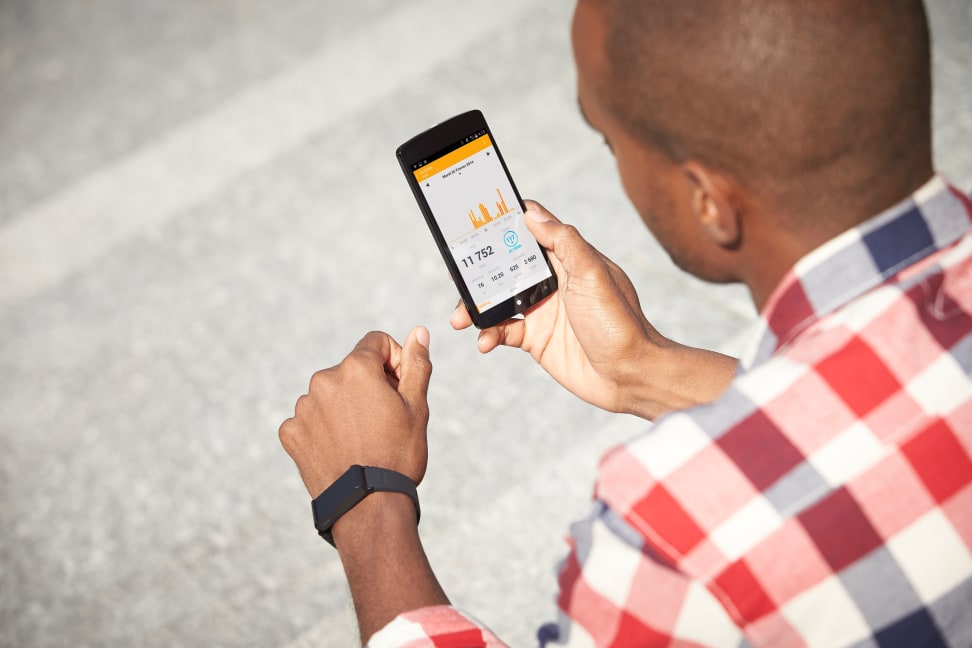 Credit:
Withings
Credit:
Withings
Products are chosen independently by our editors. Purchases made through our links may earn us a commission.
It hasn't taken long for Withings to make a splash in the highly competitive world of wearable tech. The French company has only been around since 2008, and already it's positioned itself as an innovative force in an otherwise combative market. But how well does its line of connected gizmos actually hold up to user experience?
After a recent visit to Withings' new offices in Cambridge, Massachusetts, I was given the opportunity to try out three of their products: the Pulse O2 Activity Tracker, the Aura Smart Sleep System, and the Smart Body Analyzer.
I had already been using my smartphone to monitor my sleep and fitness activity for some time, but the degree of "quantification" afforded by these gadgets reached a new level. Suddenly, I had accurate measurements of my weight, body fat percentage, body mass index, heart rate, blood oxygen level, sleep activity, and environmental temperature. I could even determine the volume of carbon dioxide in my bathroom, and I got all that from just three devices.
The sheer amount of data is impressive, but the ecosystem is not without its flaws, especially the Withings Health Mate app. But we'll get to that later.
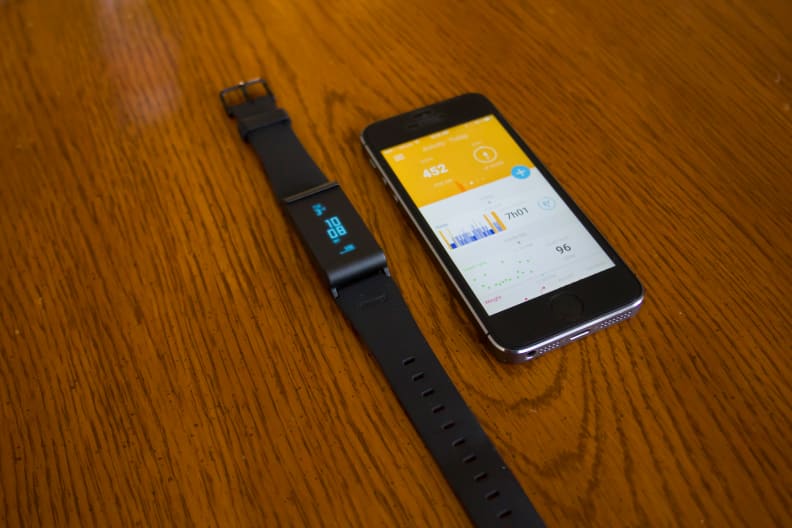
The Pulse O2 Activity Tracker
As its name suggests, the Pulse is an activity tracker with a broader focus than other wearables. In addition to tracking the usual metrics—steps, calories, distance travelled, etc.—it measures both heart rate and blood oxygen level (also known as pulse oximetry).
Overall, the Pulse is a pretty impressive device. It manages to aggregate steps, distance, elevation climbed, sleep, and more—all while maintaining a five-day battery life. But after aggregating this data, you start to realize its limitations.
The Pulse syncs with your smartphone over Bluetooth, but the syncing process is not very reliable. Sometimes you have to sync it multiple times before the Withings app finally connects and imports the latest data set.
In terms of design, the Pulse works for sports enthusiasts, but it's not exactly fashionable like its competitor the Misfit Shine. When my girlfriend first saw it, she told me it looked like one of those ankle monitors worn by people under house arrest.
{{ photo_gallery name="Withings Pulse O2 Gallery" }}
I always wore it on my wrist like a watch with the included wrist strap, but it also comes with a clip so you can attach it to your clothing. There is one button on the Pulse, which you can use to cycle through the various measurement screens. There's also a rudimentary touchscreen for launching the sleep and heart functions and viewing previous days' measurements.
The pulse oximetry sensor was definitely the most interesting feature. While it's measurements seemed accurate, it left a bit to be desired. The sensor is located on the back of the Pulse, requiring you to remove it from the wrist strap to use it.
The sensor requires you to place your finger on it, but it didn't work reliably until I understood how to rest my finger on it. You have to use the right amount of pressure; if you press too hard on the sensor, it won't pick up your heart rate or your blood oxygen level. You also have to keep extremely still, unless you want to take the measurements again.
When compared to new trackers like the Jawbone UP3 and the Fitbit Charge HR, which both monitor your heart rate from your wrist, the Pulse's finger sensor just seems a bit outdated. But then again, neither of those devices measures pulse oximetry.
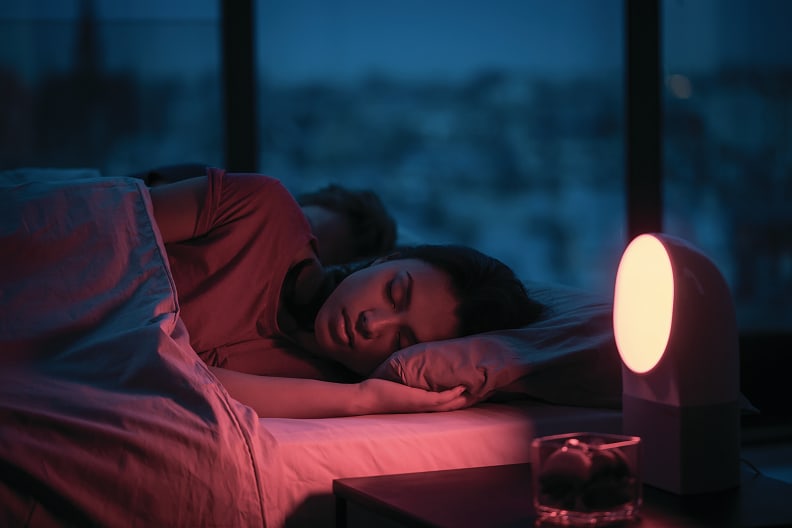
The Aura Sleep System
The Pulse Activity Tracker can be used to monitor sleep, but who wants to wear a tiny computer on their wrist while they're counting sheep? The Withings Aura, a futuristic-looking sleep tracking system, skirts this issue with the inclusion of two parts: the Bedside Device and the Sleep Sensor pad.
{{amazon name="Withings Aura Smart Sleep System (iOS)", asin="B00LC2VWJI", align="right"}} The Bedside Device is essentially a futuristic alarm clock. It displays the time, glows in different colors, and plays soothing sounds to help you fall asleep and wake up—_gently_. The sensor is simply a pad that you place beneath your mattress to measure movement during sleep.
The Aura works through both the Withings Health Mate app and the Bedside Device. The top and right side of the device are touch sensitive, but I could not always get them to work. The gestures are also not very intuitive.
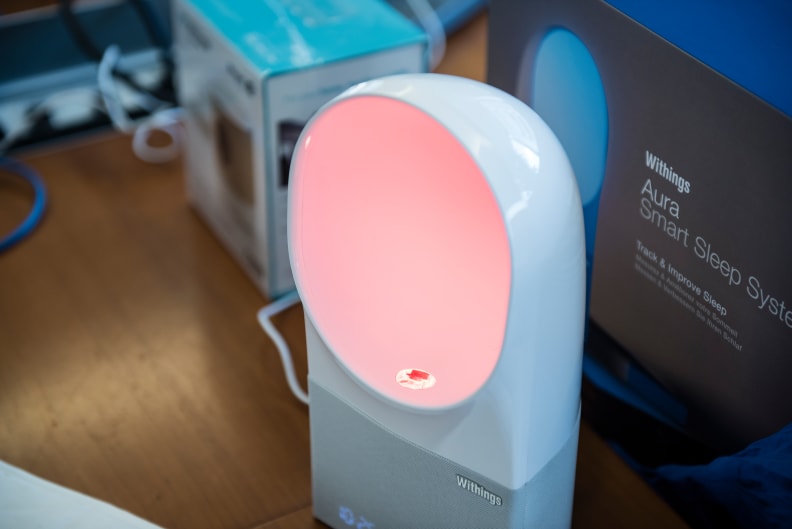
The Withings Aura will glow red during its sleep program and blue during its wake-up program.
For example, in the morning, it's one tap on the top of the device to hit snooze, and two taps to shut off the alarm. But when you're groggy and tired and just want to sleep another five minutes, it's hard to remember the difference. That may change with repeated use, but it could also be a matter of personal preference. Programmable gestures might have worked better.
My first night with the Aura, I thought it was a bit odd. When I started the sleep program, the Bedside Device glowed red and played some soothing sounds (I chose waves breaking on a beach). At first I found the display a bit jarring, but once I lowered the volume and brightness it became quite relaxing. After about fifteen minutes, the Bedside Device shuts off, assuming you have fallen asleep—which may or may not be a bit presumptuous.
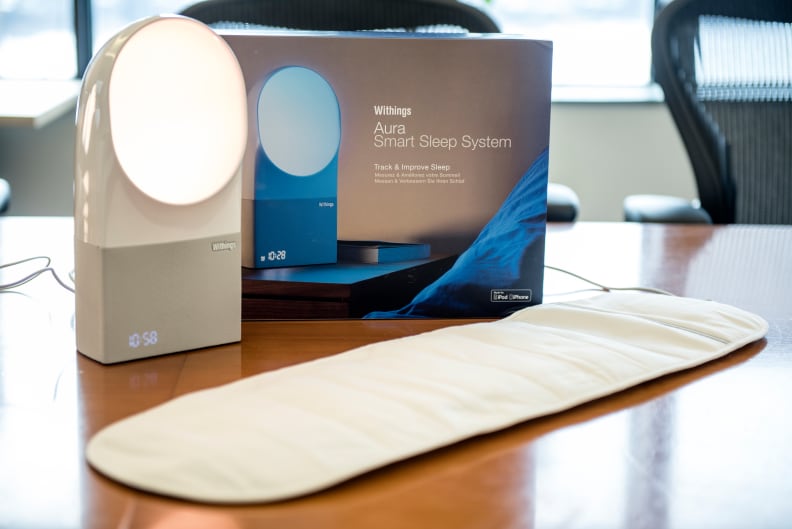
The Withings Aura monitors your sleep through a special pad that goes under your mattress.
When wake-up time approaches, the Aura begins to glow light blue and quietly play some kind of ambient soundscape. When the actual alarm goes off, the music simply gets louder. It ends up being a much more pleasant way to wake up compared to traditional alarms.
As for the sleep tracking, I was a bit confused at first. My first couple nights of sleep took a few days to sync to the Withings app for some unknown reason. And unlike other sleep-tracking apps like the Sleep Cycle Alarm, you don't need to tell the Aura that you're going to sleep. Using its sensor, the device starts tracking as soon as it realizes there's someone in the bed.
That said, the device ends up working pretty well, with the only issue I noticed being its neglect for other use cases; the Aura will start tracking your "sleep" even if you're just lying in bed reading or watching Netflix. That's likely to distort the data for your overall sleep patterns. But with a few software tweaks, Withings could easily resolve this issue.
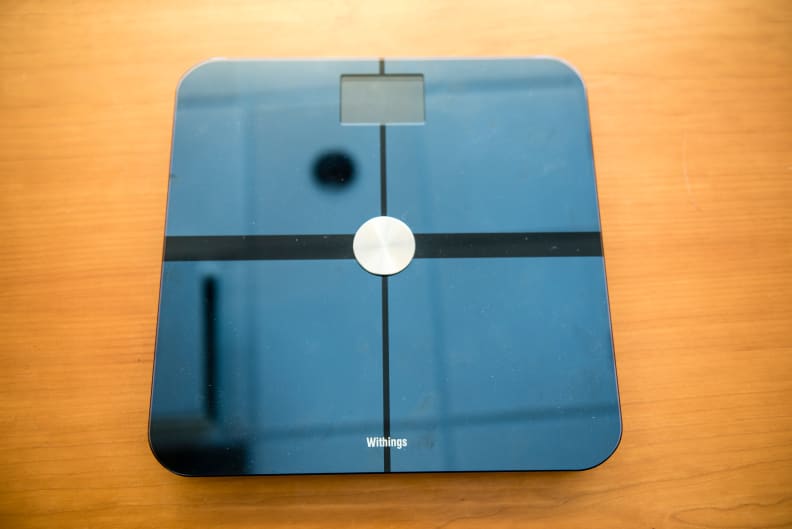
The Smart Body Analyzer
It may have a generic-sounding name, but the Smart Body Analyzer does a lot more than just measure your weight. This smart scale measures your body mass index, body fat percentage, heart rate, even the carbon dioxide level and air temperature in your bathroom.
All of this data is then beamed to the Health Mate app, which provides the scale with some helpful data. After its done measuring, the scale displays a series of personal information: the previous day's step count, courtesy of the Pulse; your Nike Fuel score, if you've connected Health Mate to Nike+; and even an umbrella icon to let you if it's going to rain, the usefulness of which is debatable.
Withings has managed to pack all of these features into one of the most elegant bathroom scales I've come across. It's essentially just a black glass slab that sits on your floor like any scale, only smarter. Of all the Withings products I've tested, this was actually the most reliable.
{{ photo_gallery name="Smart Body Analyzer Gallery" }}
The only time the scale screwed up was when it failed to pick up my heart rate. I had just stepped out of the shower and my feet were still a bit wet, which most likely messed with the electrical signals that the scale uses to measure your heart rate. In another instance, the scale didn't move beyond the initial weight measurement prompt, but that seemed to be a one-time fluke.
Aside from those issues, the scale provides a lot of helpful information that fitness enthusiasts will appreciate. The average consumer might not see the point in tracking things like body fat percentage, but if you want to lose weight or build muscle, the Smart Body Analyzer could be a valuable tool.
The Health Mate App
While each of the above products tracks and monitors a particular aspect of your lifestyle, the Withings Health Mate app is the glue that binds them all together. It aggregates every piece of data from those devices into a unified health timeline, showing your steps, sleep, heart rate, weight loss, etc.
And if that isn't enough, it connects to other popular apps like RunKeeper and MyFitnessPal, as well as both Apple Health and Google Fit. By connecting the app to Apple or Google's health platforms, you can further aggregate all of your health data with any other compatible device or service.
The app's focal point is the Timeline view, where you can dive deeper into the numbers behind your fitness activity, weight, air quality, sleep, and heart health. There's also a Dashboard view of your latest health stats, a Leaderboard for competing with friends, your Withings account profile, and Reminders for various exercise regimens and weight measurements.
All devices are managed and activated through the app, allowing you to customize the screens and layouts for your Pulse or Smart Body Analyzer.
{{ photo_gallery name="Health Mate App Gallery" }}
The app has a ton of features and functionality, but given the amount of data and devices it manages the app can sometimes feel a bit overwhelming. There are a lot of screens and menu buttons that are tucked away all throughout the app.
And yet, I frequently found myself puzzled by a missing feature. Since the Pulse, Aura, and Smart Body Analyzer overlap in terms of the metrics they track, you would think there would be a way to see which stats came from which device, but this simple feature does not exist.
As for performance, Health Mate on iOS could be pretty buggy at times. It would occasionally crash and even take multiple attempts to get my Pulse to sync with it. It's unclear if these issues relate to the app or the products, but given how long some of these products have been on the market, the overall experience could use a lot of tweaking.
Conclusion
In some ways, Withings reminds me of Apple. The company's products are designed well and feel like an Apple for the health world. But the experience is marred by silly bugs and software that could use a bit more polish in terms of functionality.
If you're looking for an activity tracker, there are newer and perhaps better options than the Pulse O2, unless pulse oximetry is really important to you. New products like the Fitbit Charge HR, the Jawbone UP3, and even the Apple Watch promise far more extensive heart rate monitoring.
The same could be said for the Aura, which is good at what it does, but it's core functionality can be found in wearables at a much lower price point. However, the device I appreciated the most was the one I came into contact with the least–the Smart Body Analyzer.
Compared to the other devices, it does its job more reliably and provides more context about my health, and it does this in the shortest amount of time possible. After all, how hard is it to stand on a scale for a few seconds?
Regardless, if you're a health nut or a fitness freak, Withings offers a compelling ecosystem. The amount of health metrics you can track with just a handful of devices is impressive. Now it's just up to Withings and other health startups to start making this data more useful to the average consumer.
The experts keep telling us that the quantified self is the future. We have the technology, now we just need the proper insight to improve our health.
